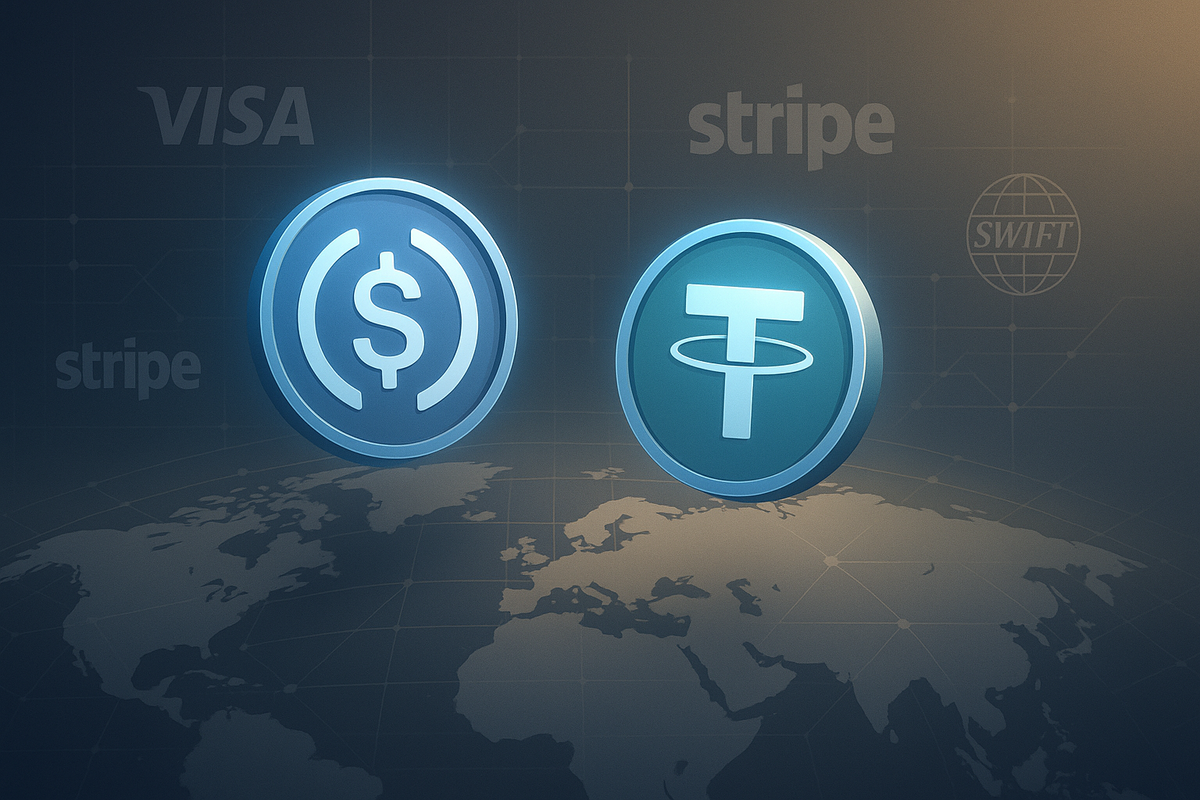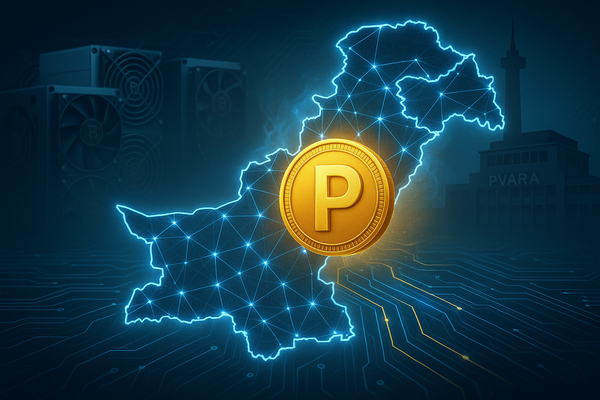Beyond Exchanges: How Stablecoins Are Quietly Powering the Next Retail Revolution
Stablecoins are no longer just for exchanges or big funds, they’re becoming the digital cash of the internet. With Stripe, Visa, and Swift joining the game, stablecoins are powering a new wave of retail finance that’s reshaping how money moves around the world.

For years, stablecoins were mainly a behind-the-scenes tool, a bridge for traders, exchanges, and funds to move money around without touching banks. But that’s changing fast.
In 2025, stablecoins are stepping into the real economy. They’re no longer just a crypto liquidity tool, they’re becoming the digital dollars of the internet, used for payments, remittances, and even savings. Big players like Stripe, Visa, and Swift are joining in, proving that the line between traditional finance and crypto is starting to blur.
From Trading Tools to Digital Cash
Stablecoins started as a simple idea, digital tokens pegged to stable assets like the US dollar. They let traders move funds instantly between exchanges or hedge against volatility.
But recent developments have completely reshaped that purpose. Instead of serving just market makers, stablecoins are now being used in e-commerce, payroll, lending, and cross-border transactions.
The global stablecoin market recently crossed $300 billion in total supply, its highest level ever. That’s not just a crypto trend; it’s the beginning of a new kind of financial infrastructure.
The Stripe Factor: Stablecoins Go Mainstream
Payment giant Stripe recently announced a massive expansion into stablecoins. Businesses in over 100 countries can now hold, send, and receive payments in USDC, a stablecoin backed by the U.S. dollar.
Stripe also launched Stablecoin Financial Accounts, allowing companies to store and spend directly in stablecoins, without converting to fiat. In simple terms, this means a business in Dubai or Nairobi can receive payments instantly from anywhere, without a bank in between.
On top of that, Stripe’s “Open Issuance” platform lets companies issue their own branded stablecoins, managing reserves and compliance in-house. A backend system that anyone can plug into.
Swift’s Blockchain Pivot
Even the global interbank network Swift, which connects over 11,000 financial institutions, is now testing blockchain-based settlement systems.
Swift’s new shared ledger system aims to speed up cross-border payments and reduce the cost of remittances. Instead of messages that take days to confirm, Swift wants to move real tokenized value across borders in seconds.
This isn’t just a tech update, it’s a defensive move. Swift knows that if it doesn’t adapt, private stablecoins could make parts of its old infrastructure obsolete.
Visa’s Role in the Stablecoin Future
Payment leader Visa is also deep in the stablecoin game. The company has been testing stablecoin settlement pilots across regions, allowing businesses to pay or receive funds in USDC instead of juggling multiple currencies.
This move could save billions in foreign exchange and wire fees each year — especially for freelancers, exporters, and digital nomads.
Visa’s vision is simple: connect blockchain-based money with the everyday Visa card system. Imagine earning in crypto, spending anywhere, and never feeling the “conversion” friction again.
Why Stablecoins Matter for Everyday Users
For retail users, stablecoins open doors to financial flexibility that banks never offered before. Here’s why this is a big deal:
- Instant global transfers: You can send money to anyone, anywhere, in seconds, 24/7, no holidays.
- Low fees: Most stablecoin transfers cost a fraction of traditional wire or remittance fees.
- Access to the dollar economy: In countries with unstable local currencies, holding USDC or USDT provides protection from inflation.
- Integration into apps: New wallets and platforms now support direct payments and subscriptions using stablecoins.
- Financial inclusion: People without access to banks can store, send, and spend money digitally using just a phone.
That’s why adoption is rising so fast, and not just in crypto-heavy countries. From freelancers in Asia and Africa to online merchants in Eastern Europe, stablecoins are quietly becoming part of daily transactions.
But It’s Not All Smooth Sailing
Despite the excitement, stablecoins still face serious challenges before they become truly mainstream.
- Regulatory clarity: Governments are still figuring out how to classify and regulate stablecoins. In the UK, the Bank of England said it must be “regulated like money”, signaling stricter oversight ahead.
- Transparency and reserves: Not all stablecoins are equally safe. Users want proof that tokens are fully backed and redeemable.
- On- and off-ramps: In many countries, it’s still hard to convert stablecoins to local currency or vice versa.
- Security risks: Retail users can lose funds through hacks, scams, or lost keys if wallets aren’t user-friendly.
- Competition with CBDCs: Central banks are exploring digital currencies (CBDCs), which might compete directly with stablecoins for everyday use.
The Numbers Tell the Story
Here are a few eye-opening stats showing how fast stablecoins are moving into the mainstream:
- According to HODLFM, the number of stablecoin wallet users grew from 19.6 million to over 30 million in one year, a 53% increase.
- Binance Smart Chain (BSC) and TRON now handle the majority of retail stablecoin payments, thanks to low fees and faster transaction speeds.
- Visa’s on-chain settlement pilots have processed millions in test transactions, paving the way for real commercial rollouts in 2025.
- Stablecoin transactions now account for more than 60% of all blockchain payment volume, surpassing Bitcoin transfers by value.
What’s Next: The Retail Stablecoin Wave
Over the next six months, expect three big changes:
- Mainstream apps are adopting stablecoins, from Shopify stores to gig platforms like Fiverr and Upwork.
- Regulatory frameworks are finalizing in major markets (US, EU, ASIA), bringing stability and confidence to users.
- Simplified wallets and cards that make stablecoins feel just like cash, tap, pay, done.
We’re also likely to see more regional stablecoins, backed by local fiat currencies or commodities, entering markets with weak national currencies.
The rise of stablecoins represents something much bigger than another crypto trend. It’s the beginning of a global financial bridge, one that connects digital and traditional money, big finance, and everyday people.
As the world moves toward tokenized economies and on-chain assets, stablecoins are emerging as the glue that holds it all together. For the first time, retail users will be part of that system, not as spectators, but as participants.
The future of stablecoins isn’t just about “stable value.” It’s about financial mobility, the freedom to move your money anywhere, anytime, without asking permission.




